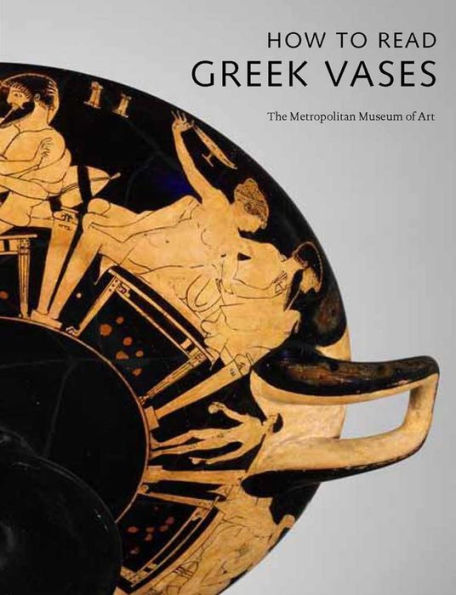Greek vases served specific utilitarian functions, and they also afforded outstanding artists, some of whom signed their work, a medium for depicting both the details of daily existence and aspects of their gods, goddesses, and heroes. We see the garments, implements, athletic competitions, and marriage and funerary rituals of Greeks who lived from the seventh through the fourth century B.C. We see their mythological figures and stories, for instance, the goddess Athena with her helmet, spear, and shield, and the great hero Herakles, from his first exploit as a baby to his elevation as an immortal at the end of his earthly life.
The exceptional group of works assembled in this volume conveys the extent to which the culture of ancient Greece is still apparent today. Urns and jars inspired by Greek models are a staple in all types of public and private spaces. The meander patterns, palmettes, and other florals that adorn ancient vases recur in all kinds of modern objects. And the concept of the hero, or superman, first formulated and given visual form in ancient Greece is integral to Western culture.
How to Read Greek Vases is sure to inspire closer scrutiny of these remarkable works of art, which have survived for over two millennia to offer viewers an enlightening look into the ancient heritage of the Western world.
Published in association with The Metropolitan Museum of Art
Greek vases served specific utilitarian functions, and they also afforded outstanding artists, some of whom signed their work, a medium for depicting both the details of daily existence and aspects of their gods, goddesses, and heroes. We see the garments, implements, athletic competitions, and marriage and funerary rituals of Greeks who lived from the seventh through the fourth century B.C. We see their mythological figures and stories, for instance, the goddess Athena with her helmet, spear, and shield, and the great hero Herakles, from his first exploit as a baby to his elevation as an immortal at the end of his earthly life.
The exceptional group of works assembled in this volume conveys the extent to which the culture of ancient Greece is still apparent today. Urns and jars inspired by Greek models are a staple in all types of public and private spaces. The meander patterns, palmettes, and other florals that adorn ancient vases recur in all kinds of modern objects. And the concept of the hero, or superman, first formulated and given visual form in ancient Greece is integral to Western culture.
How to Read Greek Vases is sure to inspire closer scrutiny of these remarkable works of art, which have survived for over two millennia to offer viewers an enlightening look into the ancient heritage of the Western world.
Published in association with The Metropolitan Museum of Art

How to Read Greek Vases
176
How to Read Greek Vases
176Paperback

Product Details
| ISBN-13: | 9780300155235 |
|---|---|
| Publisher: | Yale University Press |
| Publication date: | 01/18/2011 |
| Series: | The Metropolitan Museum of Art - How to Read |
| Pages: | 176 |
| Product dimensions: | 8.10(w) x 10.40(h) x 0.50(d) |
